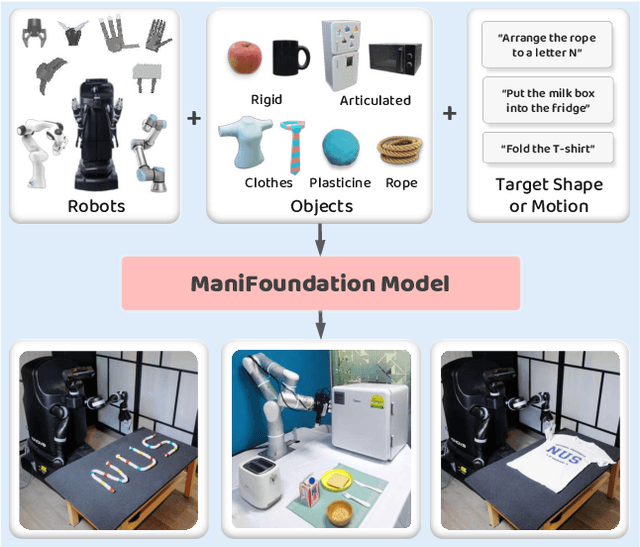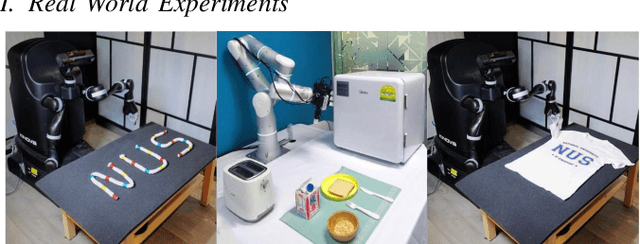Debang Wang
ManiFoundation Model for General-Purpose Robotic Manipulation of Contact Synthesis with Arbitrary Objects and Robots
May 11, 2024



Abstract:To substantially enhance robot intelligence, there is a pressing need to develop a large model that enables general-purpose robots to proficiently undertake a broad spectrum of manipulation tasks, akin to the versatile task-planning ability exhibited by LLMs. The vast diversity in objects, robots, and manipulation tasks presents huge challenges. Our work introduces a comprehensive framework to develop a foundation model for general robotic manipulation that formalizes a manipulation task as contact synthesis. Specifically, our model takes as input object and robot manipulator point clouds, object physical attributes, target motions, and manipulation region masks. It outputs contact points on the object and associated contact forces or post-contact motions for robots to achieve the desired manipulation task. We perform extensive experiments both in the simulation and real-world settings, manipulating articulated rigid objects, rigid objects, and deformable objects that vary in dimensionality, ranging from one-dimensional objects like ropes to two-dimensional objects like cloth and extending to three-dimensional objects such as plasticine. Our model achieves average success rates of around 90\%. Supplementary materials and videos are available on our project website at https://manifoundationmodel.github.io/.
Taming Diffusion Models for Music-driven Conducting Motion Generation
Jun 15, 2023



Abstract:Generating the motion of orchestral conductors from a given piece of symphony music is a challenging task since it requires a model to learn semantic music features and capture the underlying distribution of real conducting motion. Prior works have applied Generative Adversarial Networks (GAN) to this task, but the promising diffusion model, which recently showed its advantages in terms of both training stability and output quality, has not been exploited in this context. This paper presents Diffusion-Conductor, a novel DDIM-based approach for music-driven conducting motion generation, which integrates the diffusion model to a two-stage learning framework. We further propose a random masking strategy to improve the feature robustness, and use a pair of geometric loss functions to impose additional regularizations and increase motion diversity. We also design several novel metrics, including Frechet Gesture Distance (FGD) and Beat Consistency Score (BC) for a more comprehensive evaluation of the generated motion. Experimental results demonstrate the advantages of our model.
 Add to Chrome
Add to Chrome Add to Firefox
Add to Firefox Add to Edge
Add to Edge